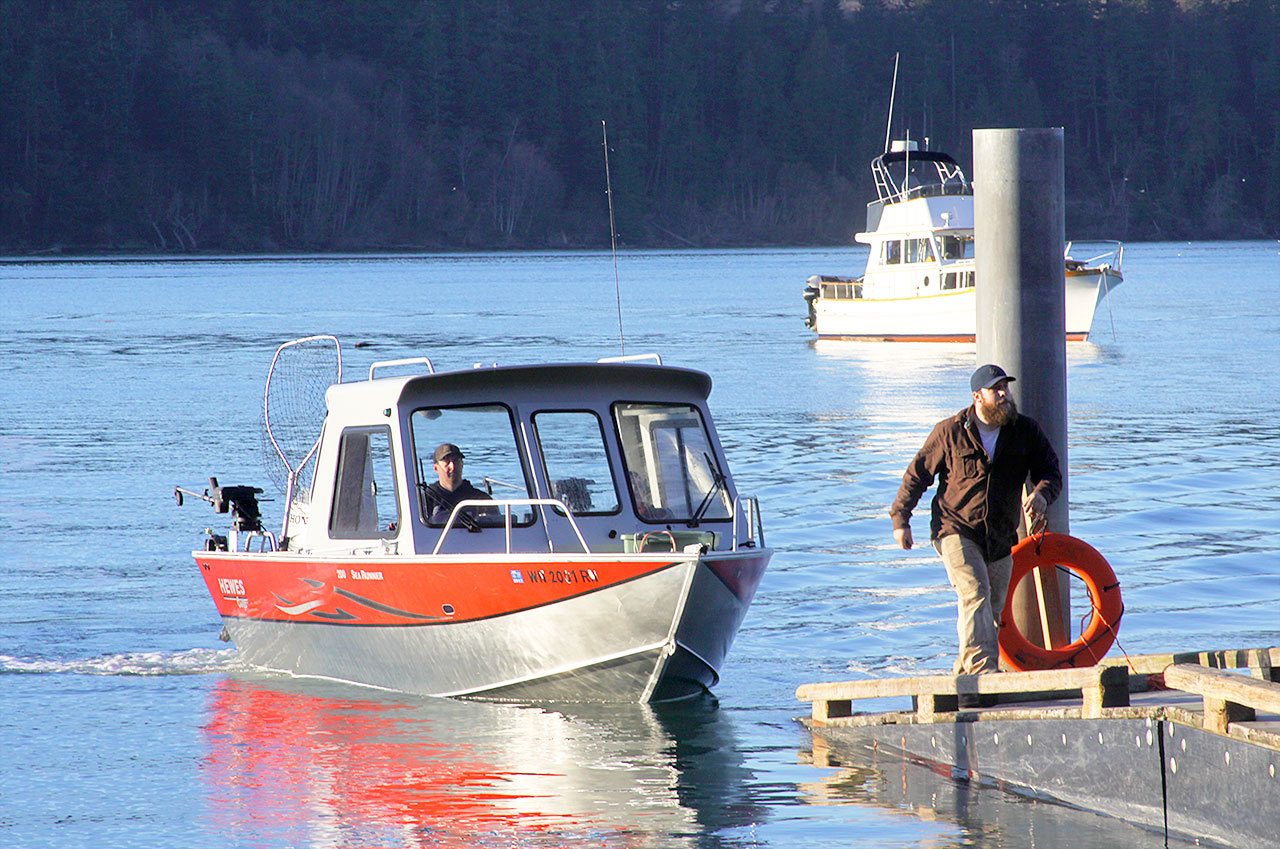North Puget Sound residents got a taste of spring last weekend with blue skies and enough sunshine to get people outside.
The unseasonable weather extended through Monday — so pristine that La Conner’s Mark Moran and a couple of buddies launched a fishing boat in Cornet Bay and spent the day searching for blackmouth in waters west of Whidbey Island.
Longtime fishing companions, the trio had to steer clear of popular Marine Area 7, the waters around the San Juan Islands that were shut down to salmon fishing last week. Instead, they tried their luck in Marine Area 6, a stretch of the Strait of Juan de Fuca presently open to blackmouth that has been a hot spot for anglers in recent weeks. It just wasn’t for Moran and his friends Monday.
“The last couple of years have been pretty rough around here,” Moran said.
The winter blackmouth season not only has been less bountiful, it also has been difficult to count on for anglers in recent years. Managers with the Washington Department of Fish and Wildlife have had to shut down the season early in certain marine areas due to anglers reaching quotas sooner than expected. In some cases, such as in Anacortes two years ago, the early closures wiped out traditional blackmouth salmon derbies.
On Thursday, the state is experimenting with a late re-opening of Marine Area 9, which makes up mostly Admiralty Inlet on the west side of Whidbey.
Marine Area 9 was open the entire month of November before closing and was scheduled to re-open a month ago but fish managers opted for a later start in hopes that the season can last through March or even into April, according to Mark Baltzell, Puget Sound Recreational Salmon Fishery Manager with WDFW.
“The whole idea is if we could delay the opening then we could have a better chance of fishing later on into the spring,” Baltzell said.
Baltzell said Marine Area 9 experienced “phenomenal fishing” in November when roughly half of the preseason quota was harvested for that area.
There’s little reason not to expect similar success in that area just in time for the President’s Day weekend, said Ryan Lothrop, another fishery manager with the state.
Puget Sound fishery managers monitor the blackmouth season closely to control the fishery’s impact on stocks of concern.
Namely, it is watched closely due to inevitable human encounters with wild Chinook salmon, which were federally listed as threatened in Puget Sound under the Endangered Species Act in 1999.
A blackmouth is considered an immature hatchery Chinook which gets its name by its black gumline.
Hatchery Chinook can be identified by a missing adipose fin, which are clipped by hatchery workers.
Thursday’s re-opening of Marine Area 9 means that all waters that hug Whidbey Island shores will be open to blackmouth fishing — for the time being.
Whidbey Island is surrounded by four different marine areas (6, 8-1, 8-2 and 9) that contain different rules and a fifth marine area (7) that starts just a short distance from Deception Pass.
“Whidbey Island doesn’t really touch Marine Area 7 but I can throw a rock to it,” said Ralph Downes, enforcement officer with the WDFW.
That area’s success this winter was exemplified by the Roche Harºbor Salmon Derby, which had a record 156 fish weighed in on the event’s first day in mid January.
Other blackmouth derbies are coming soon, including the Olympic Peninsula Salmon Derby this weekend and Everett Blackmouth Derby March 18.
With events such as these contingent on an open fishing season, state fishery managers get creative with the seasons to satisfy as many interests as they can.
But once preseason quotas are met, there’s no wiggle room.
Aside from consulting the WDFW’s Sport Fishing Rules pamphlet, the department suggests anglers look frequently on its website for emergency rule changes, which are frequent.
In Marine Area 9, only one hatchery Chinook (or blackmouth) may be retained per day. Anglers in Marine Area 6 have been enjoying a two-fish limit but that will be reduced to one starting Thursday.
Regardless of the marine area, all wild Chinook and other species must be released.
“Area 6 has been really hot the last couple of weeks,” Lothrop said. “Seven was fishing very solid, but not quite as good as six.”
The Marine Area 9 fishery is slated to go until April 15.


